This Safari Won’t Destroy Africa
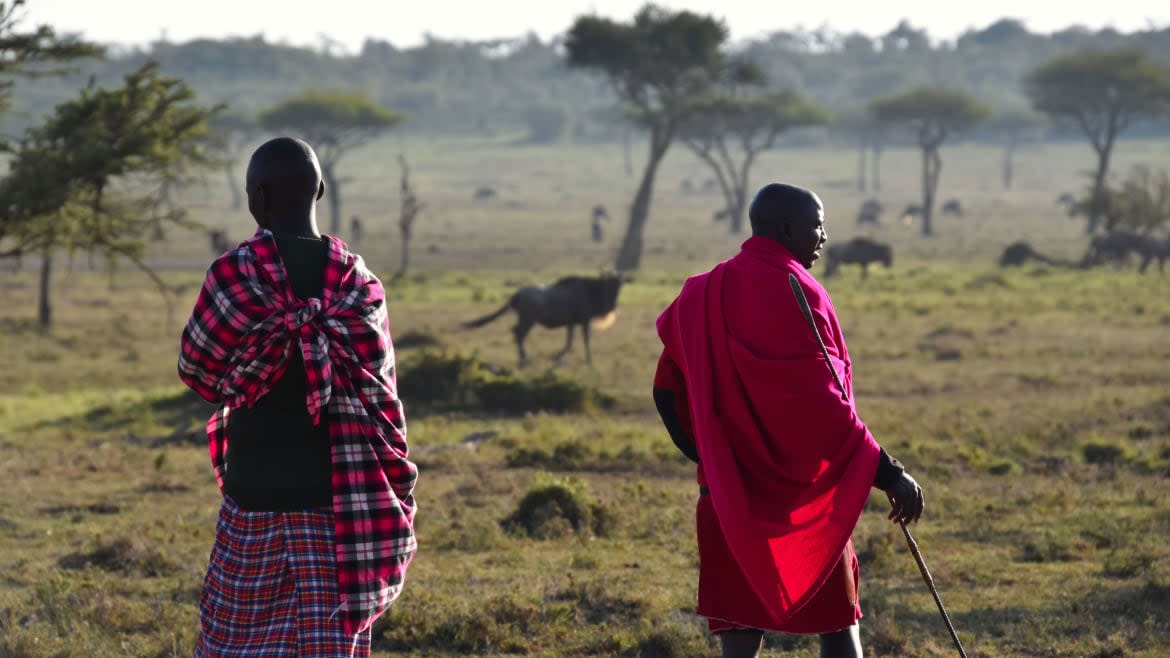
I heard the crack of bone—sharp, like the snap of a thick branch under the pressure of a firm boot. Just a few yards away, in the brisk morning air, a lioness gnawed on the head of a wildebeest. Like reapers from the underworld collecting a soul, scavenging hyenas hovered and cackled, tricking her into dropping the head and then darting away with it.
About 20 minutes later, my Maasai guides, Steve Nkumum and Esmey Soyian (guide in training) found a wildebeest giving birth. We watched as she rolled and pushed, and the baby slipped out. The mother stood up, an amniotic sack dangled from behind. With her assistance, the calf was walking and feeding in minutes. It takes me, an adult human, a good hour and several cups of coffee, to be that agile in the morning.
I was in Africa to experience a sustainable safari at the invitation of Basecamp Explorer, an eco-tourism outfit. Basecamp’s tourism in the Masai Mara National Reserve and Mara Naboisho Conservancy in Kenya is intended to regenerate those landscapes, using tourism to benefit not only the land and wildlife, but also the Maasai people who call this their home. The Maasai serve as rangers, guides, and Basecamp’s camp operators.
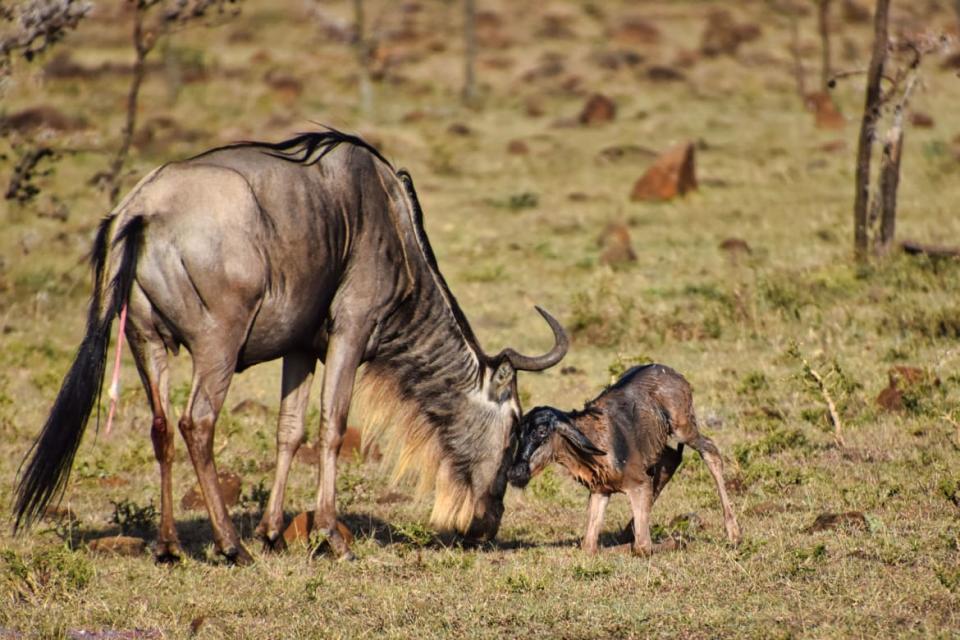
A newborn wildebeest and mother wildebeest at the Mara Naboisho Conservancy in Kenya.
Easily spotting a distant wildebeest about to give birth within a massive herd is a benefit of having trained Maasai guides. They not only authentically represent their communities, but also the land around them. The Koiyaki Guide School in the Naboisho Conservancy is continuing to bring new guides to Basecamp, with over 350 graduates—a third of whom are women.
“What a man can do, a woman can do better,” Agnes Kilena told me. She is a trailblazer for Maasai women guides and a force of nature, having become a guide in 2010. She told me that she wanted to be an advocate for animals from a young age. The Maasai once told young boys that to become a man they had to kill a lion. (This is no longer the case.) She is now the associate camp manager for Basecamp’s Leopard Hill campsite. She sees herself as a role model. How she handles the challenges can help empower Maasai women, like Esmey.
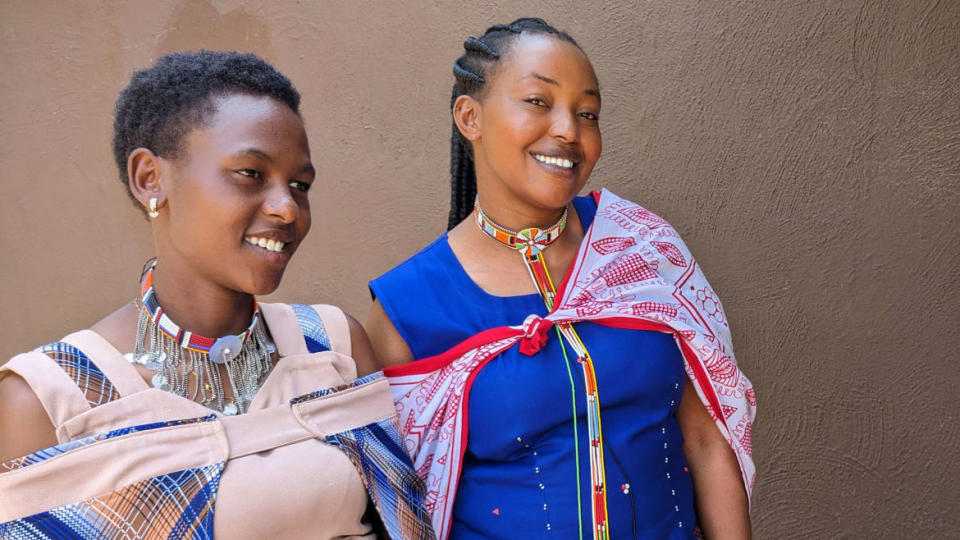
Two safari guides in training (left to right) Fiona Koya and Esmey Soyian.
This is just one area where Basecamp Explorer is having an impact. According to their self-reporting, they and their non-profit wing, Basecamp Explorer Foundation, are engaging in long-term strategies that allow the Maasai people settled around the Talek River to partner with them in conservation.
In its most basic form, sustainability is replacing what is taken when you travel and regenerative tourism is giving back more than you took. It’s not as cut and dry, though, as replacing one eaten wildebeest with a newborn (sustainable tourism), or even two (regenerative tourism). Basecamp does seem to work hard at these goals, even when the lines of conservation are fuzzy.
Practically speaking, tourism is a major source for funding conservation. This starts with their camps—glamping tents that are embedded within this wildness.
The tents themselves are a great experience. I explored three different Basecamp Explorer sites for two nights each as part of my trip, beginning with Basecamp Masai Mara (from $295 per person, per night) facing the Talek river at the Masai Mara National Reserve. We followed this with Eagle View (from $315) and Leopard Hill (from $455) in the Naboisho Conservancy. Each camp was progressively more luxurious than the last. (Additional costs for experiences also apply.)
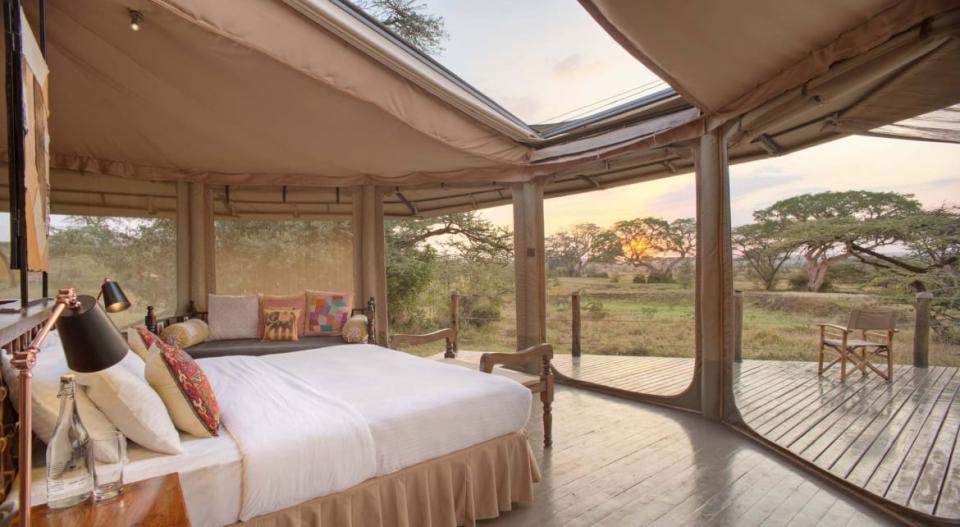
The Leopard Hill tent at Basecamp in the Naboisho Conservancy, Kenya.
Basecamp Masai Mara has many distinctions. This is the first Basecamp location, made possible by a forward thinking Maasai chief, Ole Taek. The camp sits on his land. Agnes also became the first woman guide here. This is also where the Obamas stayed when the former president was just a U.S. senator.
Eagle View sits on an escarpment and has wide views of the plains and a natural watering hole for the animals. Leopard Hill has the largest of tent decks and skylights, sitting near artificial watering holes that sometimes bring the animals right up to your tent.
Tents at each of the main camps have large bedrooms, with comfortable beds, as well as an en suite bathroom with indoor and private, outdoor showers. Each campground has spacious dining areas with a view and a nightly multi-course menu with a couple options for the main. (They also try to meet your dietary requirements.) Friday night menus feature traditional Kenyan food.
For you adrenaline junkies, their Dorobo Mobile Camp (from $265) has traditional tent camping, and is in the thick of the savannah.
Camps emphasize sustainability in all the areas you’d expect—glass water bottles, eco-friendly soaps, a garden for a farm-to-table menu, and solar powered tents, which can lose power at night, but usually only when you’re asleep.
And then there are the reasons tourists travel to the Masai Mara National Reserve and the Naboisho Conservancy: safaris.
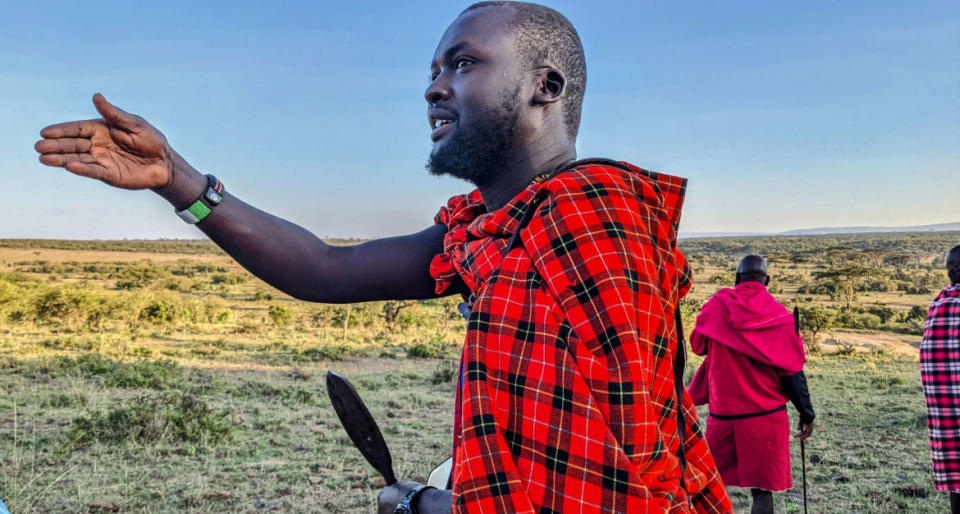
The Maasai guide, Steve Nkumum.
Safaris are opportunities for guests to learn about conservation, wildlife behavior, and Maasai culture. Our guides, like Steve, who shares his culture and guidework on Instagram, brought a wealth of knowledge and a contagious enthusiasm.
Safari game drives start before the sunrise. These were my favorite drives, and while I know it’s just an optical illusion, the Kenyan sun hung larger than life over the horizon. This was followed by breakfast, though you can have Basecamp’s amazing coffee and cookies delivered to your tent before you leave.
There are also afternoon and sunset game drives. The latter includes sundowners, where vehicles stop somewhere picturesque, set up a table and pour drinks—like wine, local beer, or the safari classic popularized by the British, a gin and tonic.
Modern humans evolved in the African savanna, so deep in our psyche is that ancestral fear of predators lurking in the dark. You feel that strongly in a night safari. Our guides would stop, turn off the engine and the lights. We stared into the pitch black surrounding us, with only the light of the Milky Way draped overhead, and quietly listened for animal sounds. Our guides would then follow the sounds and cut the engine again. This time they’d use a softer, red flashlight as light. Suddenly, we were in a field, surrounded by 16 lions, who were ferociously… sleeping.
That is, unless, of course, they were mating. (The red light then took on a whole new meaning.) Lion action is a morning, day, and night thing, as long as the lioness is in heat, and it usually happens every 15 minutes or so for a few days. It lasts about a minute each time. Miss a chance to observe it and all you have to do is wait a few minutes.
At other moments, that predatorial feeling felt very real, especially as we watched a couple lions roaring in our direction just a few feet from us. They were calling out to each other, and lions tend to hunt at night. (I shifted back in my seat a couple inches, as if that would protect me.) Nothing dangerous ever happened, of course, and this is where the safari trucks seem to use evolution to their advantage. Evolution didn’t equip lions or leopards or elephants with the idea of a truck. All they see is one big odd thing, for which they have no concept, nor do they hunt.
But that illusion can break if you’re not careful.
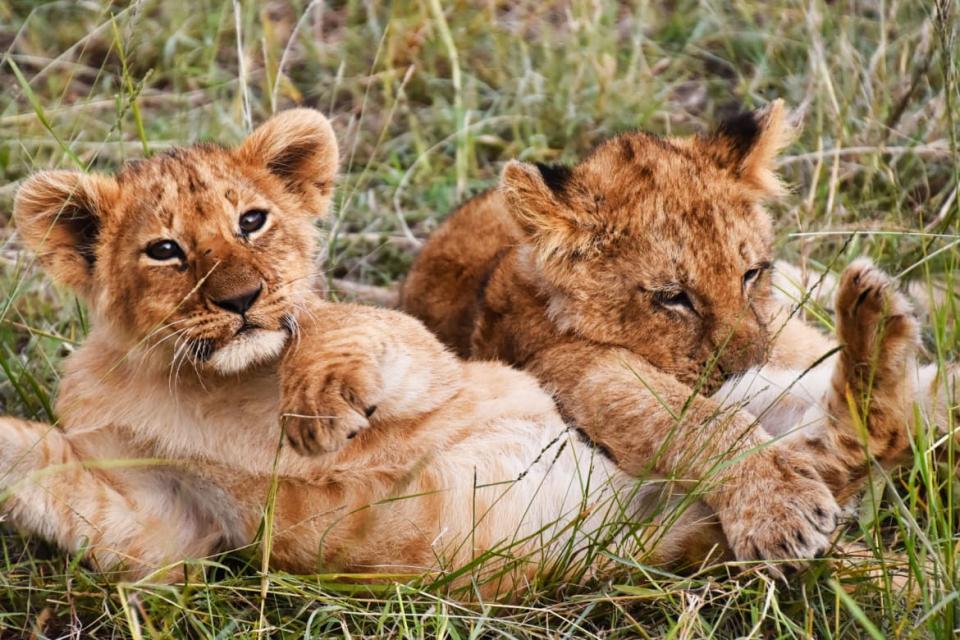
Lion cubs playing in Kenya.
“No waving at the animals,” our guides would remind us. “Keep your hands inside.” Sudden moves could potentially break that illusion. (What kind of monster would see a lion cub and not want to wave?)
Walking safaris, which happen in The Naboisho Conservancy, were different entirely.
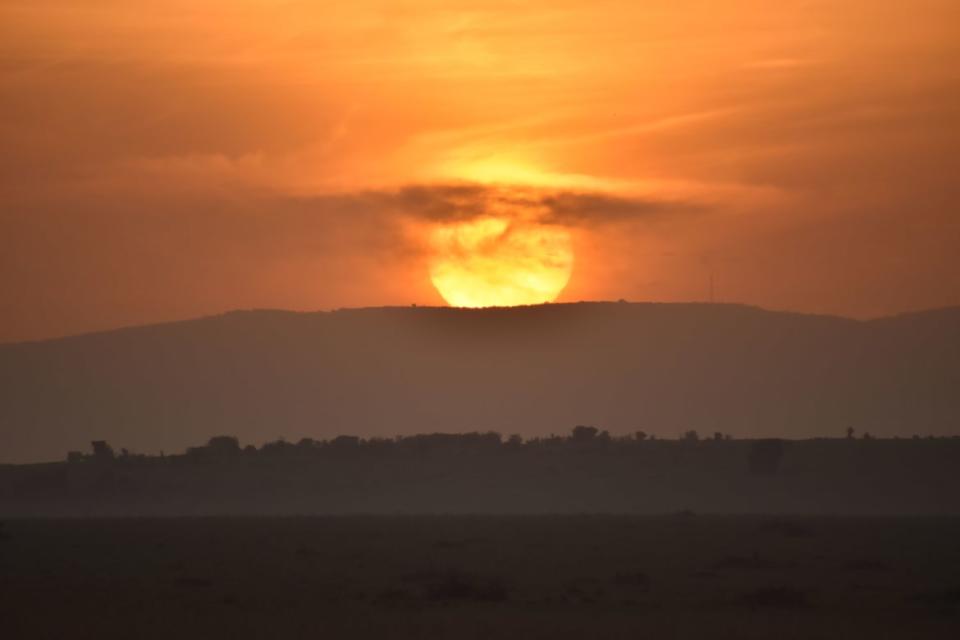
The sunrise in the Mara Naboisho Conservancy, Kenya.
Walking safaris meant getting out of the safety of the truck and hiking across the land. Steve and other Maasai guides armed with spears and knives led those hikes, and a Maasai ranger carrying a rifle followed behind us. It is a fantastic hike that comes with a beautiful breakfast waiting for guests at the end.
But safaris are not always conservation perfect, and this is particularly true in the National Reserve, which is public land and where there are many safari operators vying for the same close-ups of the wildlife. Too many vehicles acting aggressively around wildlife has the potential to stress the animals. The National Reserve does try to protect animals—rangers will check in on large groups and some roads are closed off to keep vehicles away from newborn lions, for example, but the temptation for guides to give visitors that ideal photo is real and the rangers don't always break up large caravans of trucks. I visited during calving season (January through March), and a few months later (July through September) the great wildebeest migration happens, which are the busy seasons.
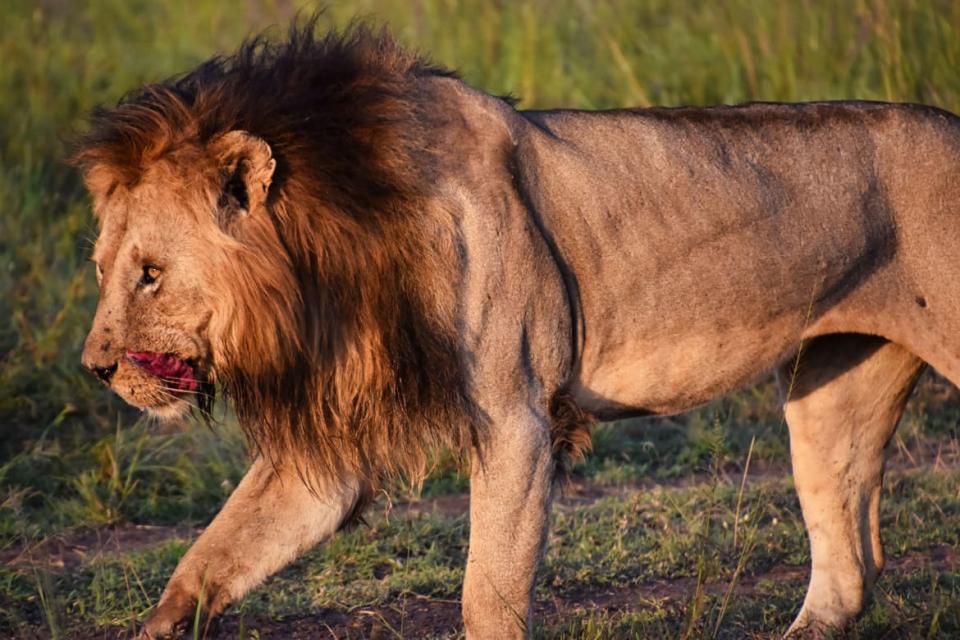
A wounded lion in the Masai Mara National Reserve in Kenya.
I could tell that even Basecamp guides felt that tension between giving guests a good photo and not stressing wildlife. But if there were too many vehicles, Steve would often play the long-game by parking somewhere else, where he thought the wildlife would go on their own. It meant waiting a little, but if a cheetah walked your way, then it chose to be around you.He was frequently right.
Since it is private land, the Naboisho Conservancy is always a more intimate experience with less overtourism. No more than five vehicles from Conservation partners are allowed near wildlife at any given time.
But conservation and sustainable and regenerative tourism for Basecamp Explorer are bigger than safaris, soaps, and solar.
Basecamp sees what they are doing as fighting poverty through new forms of employment as guides, staff, and rangers. They work with Maasai by not trying to take the land, but rather lease it, which means the communities are receiving regular compensation paid for by tourism while keeping their property. They are also fighting water scarcity through new rainwater collection systems and the restoration of springs.
At Basecamp Masai Mara, reforestation is happening through a tree nursery. Kenya has lost most of its forests to many factors, including illegal logging, demand for wood fuel, and farming. By the end of 2022, Basecamp planted approximately 350,000 trees. Reforestation can reduce drought and eventually help shift their carbon balance sheet forward. Guests can also help by planting trees. Here you will also find the Obama Forest—trees planted by the family are marked with their names.
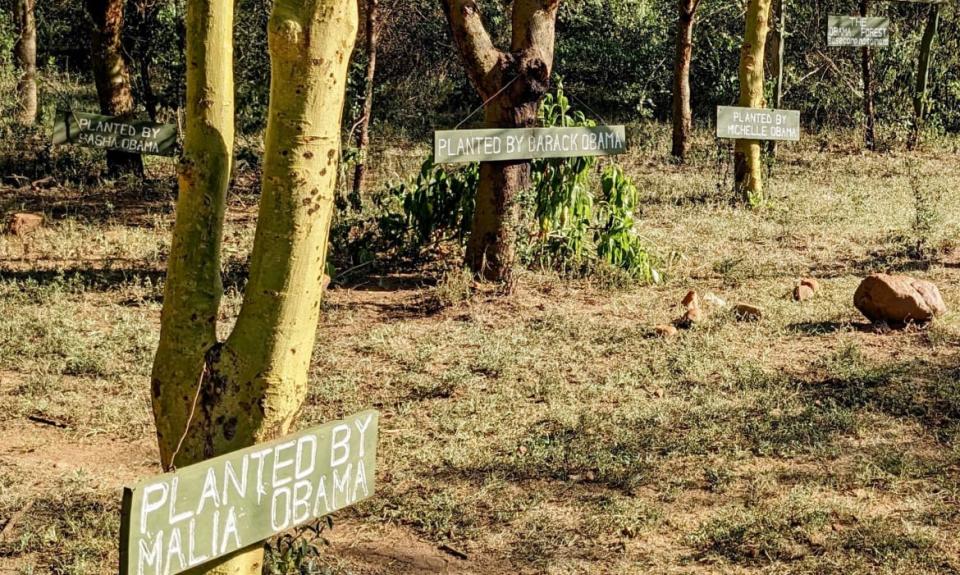
The Obama Forest. Trees planted by the Obama family at Basecamp Masai Mara.
As sustainability is also about preserving the local culture, Basecamp Maasai Mara is home to the Basecamp Maasai Brand, a Women’s Fair Trade Craft Project, which employs 200 women who use their cultural traditions to make and sell beadwork. They keep 75 percent of the profits. There is also the Enjoolata Awareness Centre, which educates visitors on Maasai culture and local wildlife.
As I discovered, African safaris are not experiences you leave in Africa.
My first morning home in Ohio, I found myself leaning against a window, languishing in jet lag and wishing I was as spry as a newborn wildebeest. Ohio was once bison, wolf, and bear territory, but except for the sound of birds, everything felt sterilized. I felt the need to get back to the forests at home.
Tourism is best when what you do and where you go benefits the people and the places visited. It is even better when those people and that place change the tourist.
Get the Daily Beast's biggest scoops and scandals delivered right to your inbox. Sign up now.
Stay informed and gain unlimited access to the Daily Beast's unmatched reporting. Subscribe now.

